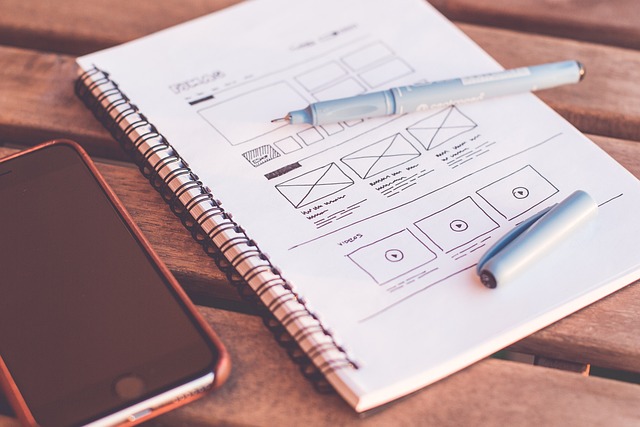The latest web design trends for 2024 prioritize minimalism, microinteractions, adaptability, fluid layouts, and personalization at scale. Clean lines, simple elegance, and strategic white space define a refined minimalist aesthetic. Subtle animations enhance user experiences through microinteractions, while flexible grid systems, fluid images, and media queries ensure responsiveness across devices. Personalization powered by AI and machine learning delivers tailored digital experiences without increased resource load. Sustainable design practices focus on eco-conscious material sourcing, optimized image loading, and nature-inspired aesthetics. These trends cater to users' growing demands for accessible, engaging, personalized, and environmentally friendly online experiences.
The digital landscape is constantly evolving, and 2024 promises exciting innovations in web design. In this article, we explore the latest web design trends shaping online experiences. From minimalism reimagined with clean lines and simple elegance to the rise of micro interactions enhancing user engagement, these trends prioritize adaptability, creative freedom, personalization, and sustainability. Get ready to dive into the future of web aesthetics and functionality.
Minimalism Reimagined: Clean Lines and Simple Elegance

In 2024, one of the most prominent web design trends is a reimagined minimalism that prioritizes clean lines and simple elegance. After several years of intricate designs and vibrant colors, there’s a growing preference for understated sophistication. Websites are embracing a more spatial aesthetic, utilizing white space effectively to enhance readability and create a sense of calm. This trend doesn’t mean sacrificing visual appeal; instead, it focuses on refining elements to their most essential forms, making content the true star of the page.
The latest web design trends also see a return to fundamental design principles, such as hierarchy, balance, and contrast, without overwhelming users with excessive details. Minimalist designs not only improve user experience by simplifying navigation but also load pages faster, contributing to better SEO rankings. This approach allows brands to communicate their messages clearly, fostering stronger connections with their audiences in an increasingly digital world.
The Rise of Micro Interactions: Enhancing User Experience

In 2024, one of the most prominent trends in web design is the rise of microinteractions. These subtle animations and visual feedback mechanisms are enhancing user experiences by making interfaces more intuitive and engaging. Microinteractions add a layer of personality to websites, allowing users to interact with digital products in a more natural way. By providing quick, nuanced responses to user actions, such as hover effects, tap feedback, or form validation animations, microinteractions improve user satisfaction and encourage exploration.
As part of the latest web design trends, designers are incorporating microinteractions to guide users through forms, provide real-time notifications, and offer seamless transitions between pages. This approach not only improves usability but also creates a more immersive and enjoyable digital experience. In a competitive online landscape, where user attention is fleeting, the strategic use of microinteractions can set apart well-designed websites, fostering higher engagement and conversion rates.
Adaptability and Responsive Design: Optimizing for Every Screen

In the realm of web design, adaptability and responsive design have become paramount as users access websites from a multitude of devices and screen sizes. The latest web design trends for 2024 prioritize creating seamless user experiences across desktops, tablets, and smartphones. Developers are leveraging flexible grid systems, fluid images, and media queries to ensure that every element on a page optimizes beautifully for each unique screen. This approach not only enhances accessibility but also drives engagement by providing fast-loading, user-friendly interfaces.
By embracing responsive design principles, web designers can cater to the diverse needs of their audience. As users transition from one device to another, the website seamlessly adjusts its layout, typography, and media elements to maintain visual appeal and functionality. This adaptability is a cornerstone of successful digital strategies in 2024, ensuring that websites remain competitive and relevant in the fast-paced, ever-evolving online landscape.
Unconstrained Layouts: Flexibility Meets Creative Freedom

In the realm of web design, 2024 is poised to break free from rigid structures, embracing unconstrained layouts that offer unparalleled creative freedom. The latest web design trends move away from boxed-in designs, allowing for fluid and dynamic arrangements that cater to diverse content types and user experiences. This shift empowers designers to craft visually captivating sites with unconventional aesthetics, pushing the boundaries of what’s possible.
Flexbox and Grid layouts are at the forefront of this revolution, providing developers with the tools to create adaptable and responsive pages. By leveraging these technologies, designers can effortlessly balance elements across screens, ensuring a seamless user journey regardless of device size or orientation. This flexibility not only enhances visual appeal but also improves accessibility, making web spaces inclusive for all visitors.
Personalization at Scale: Tailoring Digital Experiences

Personalization has long been a key element in creating engaging user experiences, but in 2024, we’re seeing it reach new heights with advancements in technology and data analytics. The latest web design trends heavily focus on personalization at scale, allowing businesses to offer individualized digital experiences to their users without significantly increasing resources or manual effort. By leveraging artificial intelligence (AI) and machine learning algorithms, websites can now adapt content, layout, and functionality based on user behavior, preferences, and even emotional states in real time.
This shift towards personalization enables companies to build stronger connections with their audience by providing tailored information and recommendations. As users interact with websites that cater to their unique needs, they’re more likely to engage, convert, and become loyal customers. The latest web design trends emphasize creating flexible layouts, dynamic content modules, and responsive user interfaces that seamlessly integrate personalized features, ensuring a seamless and satisfying experience for every visitor.
Sustainable Web Design: Eco-Conscious Practices and Visual Impact

Sustainable Web Design is one of the most prominent eco-conscious practices making waves in 2024’s latest web design trends. It involves creating digital spaces that not only minimize environmental impact but also promote a brand’s commitment to sustainability. This approach extends beyond energy-efficient hosting and includes using materials sourced responsibly, optimizing images for faster loading times, and implementing recycling or upcycling strategies in web development. The visual impact is significant—brands are incorporating nature-inspired elements, organic colors, and minimalistic designs that convey a sense of environmental stewardship.
This trend not only appeals to environmentally conscious users but also aligns with broader consumer preferences shifting towards sustainable products and services. By adopting these practices, designers can craft visually appealing websites that contribute positively to the planet while staying ahead in the competitive digital landscape.
